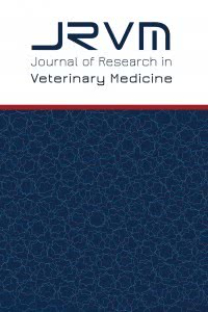AKUSTİK TEMELLİ ARAÇ TRAFİK YOĞUNLUĞU KESTİRİMİ
Trafik yoğunluk kestirimi, karayolu araçları, akustik sinyal işleme, örüntü tanıma
Acoustic Based Vehicular Traffic Density Estimation
Traffic density estimation, land vehicles, acoustic signal processing, pattern recognition,
___
- 1. Aras, S. ve Gangal, A. (2017), Comparison of different features derived from mel frequency cepstrum coefficients for classification of single channel lung sounds, 40th International Conference on Telecommunications and Signal Processing Barcelona, 2017, pp. 346-349. doi: 10.1109/TSP.2017.8076002
- 2. Beymer, D., Mclauchlan, P., Coifman, B., ve Malik J., (1997), A real-time computer vision system for measuring traffic parameters, IEEE Conference on Computer Vision and Pattern Recognition, San Juan, Puerto Rico, USA, pp. 495–501. doi: 10.1109/CVPR.1997.609371
- 3. Bolat, B., Küçük, Ü. Yıldırım, T. (2004), Aktif Öğrenen PNN ile Konuşma/Müzik Sınıflandırma, Akıllı Sistemlerde Yenilikler ve Uygulamaları Sempozyumu, İstanbul, 187-189.
- 4. Borkar, P. Malik, L. G. (2013a), Cumulative Acoustic Signal Based Traffic Density State Estimation, Third International Conference on Advances in Computing and Communications, Cochin, India, 2013, pp. 169-172. doi: 10.1109/ICACC.2013.40
- 5. Borkar P., Malik L., (2013b), “Review on vehicular speed, density estimation and classification using acoustic signal”, International Journal for Traffic and Transport Engineering, 3 (3), 331-343. doi: 10.7708/ijtte.2013.3(3).08
- 6. Durukal, M. ve Hocaoğlu, A. K. (2015), Performance optimization on emotion recognition from speech, 23nd Signal Processing and Communications Applications Conference, Malatya, pp. 308-311. doi: 10.1109/SIU.2015.7129820
- 7. Eskidere, Ö., Ertaş, F. (2009), Mel Frekansı Kepstrum Katsayılarındaki Değişimlerin Konuşmacı Tanımaya Etkisi,Uludağ Üniversitesi Mühendislik-Mimarlık Fakültesi Dergisi, Cilt 14, sayı 2. doi: 10.17482/uujfe.11784
- 8. Eskridge R., Hunt J., (1979), “Highway modeling.Part I: Prediction of velocity and turbulence fields in the wake of vehicles”, Journal of Applied Meteorology, 18 (4), 387-400. doi: 10.1175/1520-0450(1979)018<0387:HMPIPO>2.0.CO;2
- 9. Gtü (2018), http://goo.gl/QFwkWY, Erişim Tarihi: 01.07.2018, Konu: GTU Traffic Density Data Set
- 10. Hanilçi, Ç. (2007), Konuşmacı Tanıma Yöntemlerinin Karşılaştırmalı Analizi, Yüksek lisans tezi, Uludağ Üniversitesi - Elektronik Mühendisliği Anabilim Dalı, BURSA.
- 11. Koch W., Koller J., Ulmke M., (2006), Ground target tracking and road map extraction, Transportation ISPRS Journal of Photogrammetry and Remote Sensing, 61 (3), 197-208. doi: 10.1016/j.isprsjprs.2006.09.013
- 12. Li, X., Porikli, F.M., (2004), A hidden markov model framework for traffic event detection using video features, in Int’l Conference on Image Processing, Singapore, vol. 5, pp. 2901–2904. doi: 10.1109/ICIP.2004.1421719
- 13. Sandberg U., (2001), “Tyre/road noise - myths and realities”, The International Congress and Exhibition on Noise Control Engineering, Hague, Netherlands, 35-56, 27-30 August
- 14. Sumithra, M.G., Devika, A.K. (2012), A Study on Feature Extraction Techniques for Text Independent Speaker Identification, International Conference on Computer Communication and Informatics, Coimbatore, India, 10-12, January. doi: 10.1109/ICCCI.2012.6158791
- 15. Tan, E. ve Chen, J., (2007), Vehicular traffic density estimation via statistical methods with automated state learning, Proceedings of the IEEE Conference on Advanced Video and Signal Based Surveillance, pp. 164–169, IEEE, London. doi: 10.1109/AVSS.2007.4425304
- 16. Tyagi, V., Kalyanaraman, S. ve Krishnapuram, R, (2012) Vehicular Traffic Density State Estimation Based on Cumulative Road Acoustics, IEEE Transactions on Intelligent Transportation Systems, vol. 13, no. 3, pp. 1156-1166. doi: 10.1109/TITS.2012.2190509
- 17. Vijay, R., Sharma, R., Chakrabarti, T. ve Gupta, R. (2015), Assessment of honking impact on traffic noise in urban traffic environment of Nagpur, India, Journal of Environmental Health Science and Engineering. doi:10.1186/s40201-015-0164-4
- 18. Wang, Q, Zheng, J, Xu, H., Xu,B. ve Chen, R. (2018), Roadside Magnetic Sensor System for Vehicle Detection in Urban Environments, IEEE Transactions on Intelligent Transportation Systems, vol. 19, no. 5, pp. 1365-1374. doi: 10.1109/TITS.2017.2723908
- 19. Xia, Y., Shi, X., Song, G. Geng, Q., Liu (2016), Towards improving quality of video-based vehicle counting method for traffic flow estimation, Signal Processing, vol. 120, pp. 672-681. doi: 10.1016/j.sigpro.2014.10.035.
- 20. Yang B., ve Lei, Y. (2015), Vehicle Detection and Classification for Low-Speed Congested Traffic With Anisotropic Magnetoresistive Sensor, IEEE Sensors Journal, vol. 15, no. 2, pp. 1132-1138. doi: 10.1109/JSEN.2014.2359014
- 21. Zhao, H, Liu, H., Zhao, K., Yang, Y. (2011), Robust Speech Feature Extraction Using the Hilbert Transform Spectrum Estimation Method, International Journal of Digital Content Technology and its Applications, Volume 5, Number 12. doi:10.4156/jdcta.vol5.issue12.11
- ISSN: 2148-4147
- Yayın Aralığı: 3
- Başlangıç: 2002
- Yayıncı: BURSA ULUDAĞ ÜNİVERSİTESİ > MÜHENDİSLİK FAKÜLTESİ
Volkan BAŞAY, Cemal AKYÜZ, Güneş YILMAZ
DOĞRUSAL ADIM MOTORUNA SAHİP BİR AKTİF SÜSPANSİYON SİSTEMİNİN TASARIMI ve MODELLENMESİ
Elif Erzan TOPÇU, Zeliha KAMIŞ KOCABIÇAK
DEĞİŞKEN KALINLIKLI ELİPTİK FGM PLAKLARIN BURKULMA SICAKLIKLARININ BELİRLENMESİ
Ni/TiC NANOKOMPOZİTLERİN BİR KATYONİK DİSPERSANT EŞLİĞİNDE ELEKTRODEPOZİSYON MODELİ
BURSA İLİ KENTSEL DÖNÜŞÜM ÇALIŞMALARINDA ELDE EDİLEN BETON BASINÇ DAYANIMININ DEĞERLENDİRİLMESİ
ABDULLAH BEYAZ, Ramazan LİVAOĞLU
Yapay Sinir Ağları Yaklaşımı ile Boylamasına Titreşimin Transendental Denklemin Çözümü
Gözde Rabia AKTAŞ, Abdullah EMÜL, Sadettin ORHAN
ŞEHİR İÇİNDE TEMEL ÇALIŞMASI YAPILAN ŞANTİYENİN KONUTTA OLUŞTURDUĞU GÜRÜLTÜNÜN ARAŞTIRILMASI
Ali Erdem ÇERÇEVİK, Süheyla YEREL KANDEMİR, Mustafa Özgür YAYLI, Musa ÇELİK
MEKANİK TASARIM EĞİTİMİ İÇİN BİR UZMAN SİSTEM UYGULAMASI
PETROL İÇEREN ATIK SULARIN ARITILABİLİRLİĞİ VE ARITIM SİSTEMİNİN TASARLANMASI
